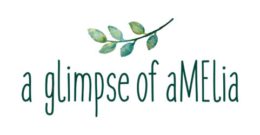KIDS PLATES, BOWELS, CUPS AND UTENSILS
I have not considered the products on which our kids’ food sits on. More so what was on the plate, rather than what was on the plate, but it turns out, in this day and age, we must question everything.
I didn’t know plates could have phthalates or contain formaldehyde (a known carcinogen). I didn’t know toxin resins could be used to bind materials or that eating off a certain material could cause reproductive harm to my child, hyperactivity or aggressiveness. I can’t comprehend how this exists.
OPTIONS
Bamboo plates are a great option. Not only are they a better option environmentally, (as they normally use the waste from off-cut). Bamboo is strong, it’s biodegradable, BPA-free, and naturally antibacterial. (Not dishwasher safe). However, ensure your bamboo plate is not bound with MELAMINE. You will need to look at the materials on the back or on the website. If you’re unsure, contact the manufacturer.
Stainless steel is another great option. It will last a lifetime, it’s strong, easy to wash, dishwasher safe, and will make a loud bang when it falls to the floor. Ensure you choose high-grade 304 stainless steel so it doesn’t corrode. Food-grade stainless steel of 18/8 is 18 per cent chromium and 8 per cent nickel. If you’re sensitive to Nickel, you can find stainless steel 18/0 which means no Nickel is included.
Silicone is still a bit of a grey area with regards to it being heated or chilled. Some studies say if it’s safe, others question if it is and, to be honest, there doesn’t appear to be a lot out there that it is entirely safe. So, if you want to use silicone, ensure it’s from a reputable brand, not off eBay or $2 shops. Check the labels to ensure it is FDA and LFGB certified, FOOD GRADE. Also, steer clear of any fancy colours unless it specifies what dyes they use, i.e.: plant-based. Know the differences between silicone and silicon! Silicon natural silicone is a man-made product.
Enamel is shown to be low-tox however with young kids flinging it around, I do find it chips and can take quite a beating. Another better option, but I don’t feel it is as durable as the above options.
Coconut bowls are environmentally friendly as they are recycling a rubbish byproduct. The bowls are smoothed and oiled naturally and are a great low-tox alternative.
Ceramic might be used for older kids, but I’ve used it from about 1 year old with Emily. Yes, we have smashed a lot, but kids eventually learn that you drop it and it breaks. This way, we use the same dinner plates at the table and a great low-tox option.
Utensils I would always choose stainless steel over plastic or silicone, but again, ensure your silicone is food-grade standard IF you choose to use it.
🥤Cups I like enamel, stainless steel, glass or thick glass jars with stainless steel straws.
I hope this helps in making a better choice towards lowering toxins around your kids.
❌ Steer clear of Melamine, Plastic, Recycled, plastic, Bamboo plates with melamine, Low-grade uncertified silicone must choose LFGB Certified.

